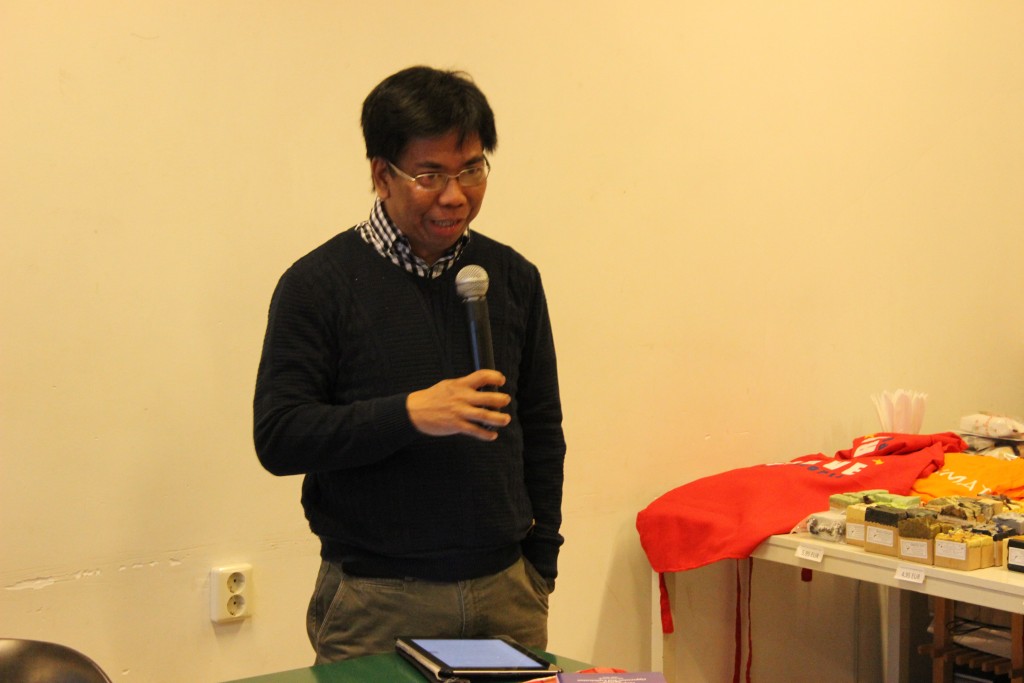
Review of Jose Ma. Sison. Building People’s Power: (Vol 2, 2010-‐2011 of People’s Struggles Against Oppression and Exploitation) Selected Writings, 2009-‐2015. Juliet de Lima (ed.). The Netherlands: International Network for Philippine Studies, 2016.
Francis A. Gealogo
Reading thru Jose Ma. Sison’s latest book, edited by Juliet de Lima, Building People’s Power, is like being brought to the forefront of the struggles of the Philippine national democratic movement, on a first hand account, with a perspective from within. The breadth and depth of the scope, coverage, and analysis of Sison’s ideas in the book is one of the most impressive contributions of the volume to radical Philippine historiography.
The book manifests both a local perspective of the Philippine realities, as well as an internationalist perspective of crisis of imperialism and the revolutionary alternatives to neoliberalism and imperialist globalization. It discussed in detail the revolutionary analysis of the economic, political, cultural and social conditions of Philippine realities, as well as the international situation of the various movements and peoples of the world. While the focus of the book is on the contemporary conditions, it is evident that all of the articles included were historically grounded and contextualized. The global contexts were always present in all of the articles, with discussions on the conditions and issues confronting the societies and people’s movements in Greece, Tunisia, Korea, Kurdistan, Indonesia, West Papua, Libya, Egypt, Germany, the Philippines, the UK and the region of North Africa and the Middle East as these societies confronted and challenged the forces of American imperialism and reaction.
Sectoral situationers of a number of people’s movements in the Philippines were provided with deeper analysis on the ideological, political and organizational tasks ahead – on the workers and peasants; youth and students; educators and teachers; women; artists and writers; and migrant workers and refugees.
The book is a compendium of letters, statements, political essays and theoretical pieces; transcripts of interviews, solidarity messages, historical narratives, tributes to fallen comrades; as well as commemorative essays that all provided the ideological and theoretical exposition of the revolutionary ideas of Sison.
Over all, the essays elaborate the running theme of the book – that the people’s revolutionary movements all over the world developing within the context of the inability of imperialism and reaction to resolve the deepening global crisis will constitute the main historical driver in the transformation of human societies in the periods to come. This long view in history is evident not only in Sison’s recollections, as CPP founding chair, of the revolutionary movement in the Philippines; and more recently, in his articles, essays and theoretical and organizational treatises in his capacity as the chief political consultant of the NDFP in the peace negotiations with the Philippine government; and as Chair of the International League of People’s Struggles.
Being the founder of the longest running communist insurgency in Asia, Sison therefore writes not only as an ideologue, organizer, tactician and theoretician of the national democratic movement; he is also one of its most prolific historian. His accounts of the Philippine revolution will continuously inspire the people’s movement that refused to be defeated (ang kilusang hindi matalo talo); his chronicles from within will constitute the fruition of the revolutionary thread in Philippine nationalist and radical historiography that characterized the works and writings of the likes of Andres Bonifacio and Crisanto Evangelista; of Macario Sakay and Ka Amado Hernandez; of Emilio Jacinto and Felixberto Olalia; of Antonio Luna and Emman Lacaba. This is but a reaffirmation that Ang tagapagganap ng kasaysayan ang siyang pinakamahusay na tagatala nito. It is in this instance when the historical actor becomes the historian’s chronicler that made the book Building People Power attain its revolutionary historical and historiographic significance.
With the volume Crisis Generates Resistance that preceded it (and the anticipated other volumes that will follow), Building People’s Power, just like the PSR and the SND decades ago, is expected to become a primary source for historians and revolutionaries of the future, to guide and inspire them with its theoretical significance, ideological currency, and historical relevance.
A minor point of criticism–in his letter to Bien on p.392, Sison mentioned the need for them to discuss further the roots of the crisis confronting Philippine society and the revolutionary alternative in realizing the future of the people’s revolution. This, he mentioned by saying that what he was presenting was an “assessment of realities and possibilities in the last lap of our existence”. I think there is no such thing as the last lap of existence, especially for revolutionaries, as the praxis of revolution historically constitute the continuing thread that will always inspire new generations of activists and revolutionaries for history to continue and for the material conditions of revolutionary change, in building people’s power, to be realized. Bien and Joma will definitely not be having their last lap in their existence, as revolutionaries will continuously be inspired by their deeds and works. There is no last lap in the revolution, to paraphrase Salud Algabre, leader of the 1935 Sakdal uprising, “the revolution will not stop, and no uprising fails because every step, every lap is a step towards the right direction.” The book is definitely a reaffirmation of that right step towards building people’s power.
Maraming salamat sa pagkakataong maging tagasuri ng aklat. Isang maalab na pagbati kay Juliet de Lima bilang patnugot, at kay Jose Maria Sison bilang manunulat sa kanilang bagong aklat. Mabuhay kayo!
